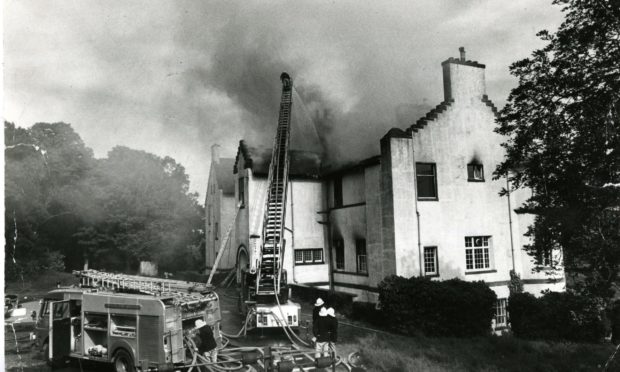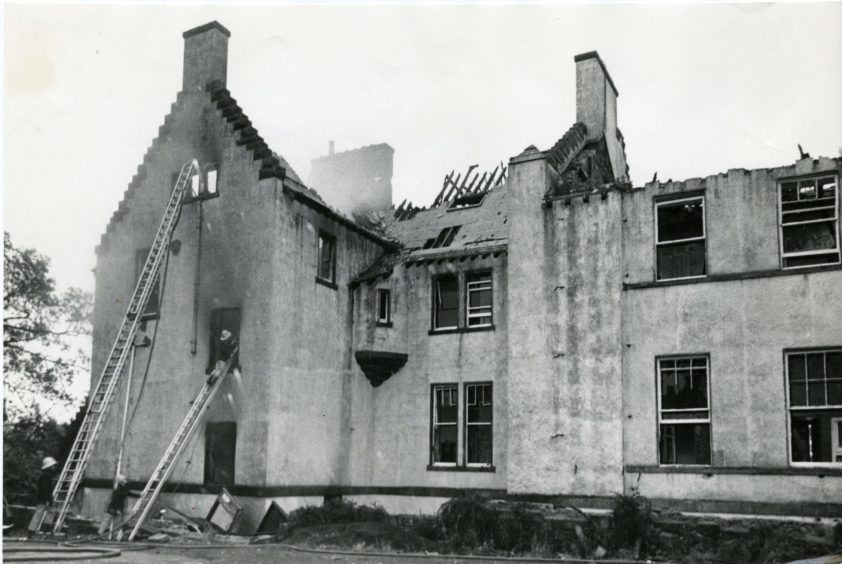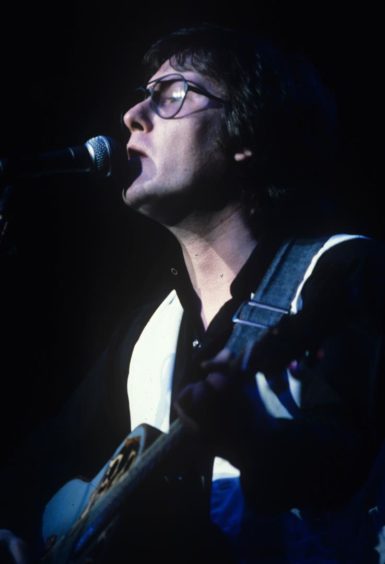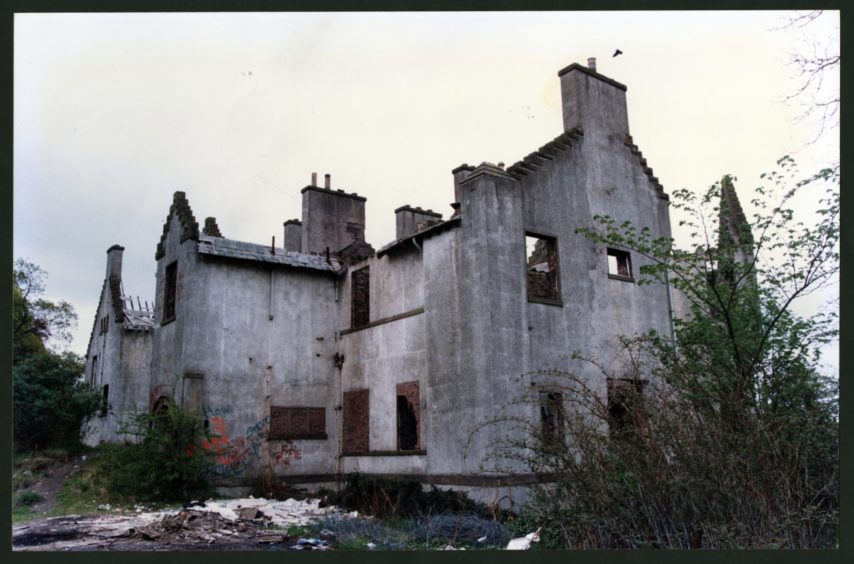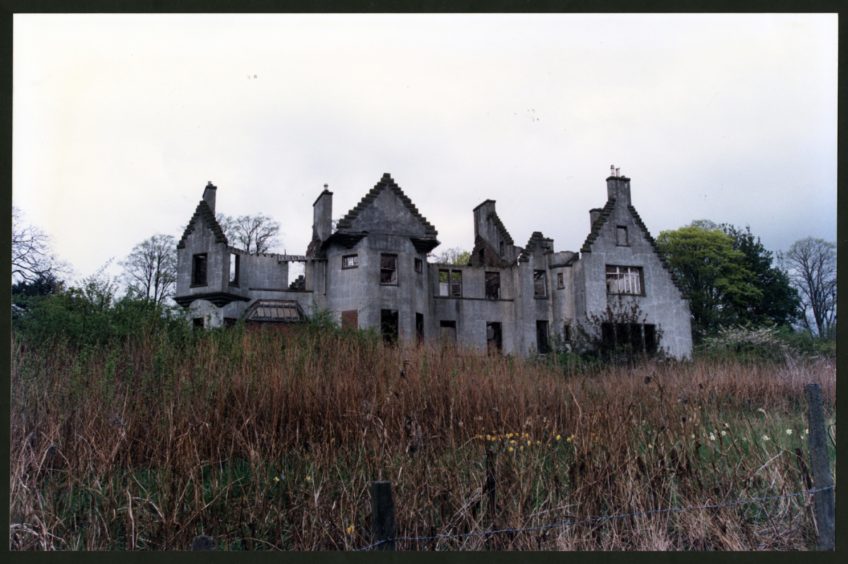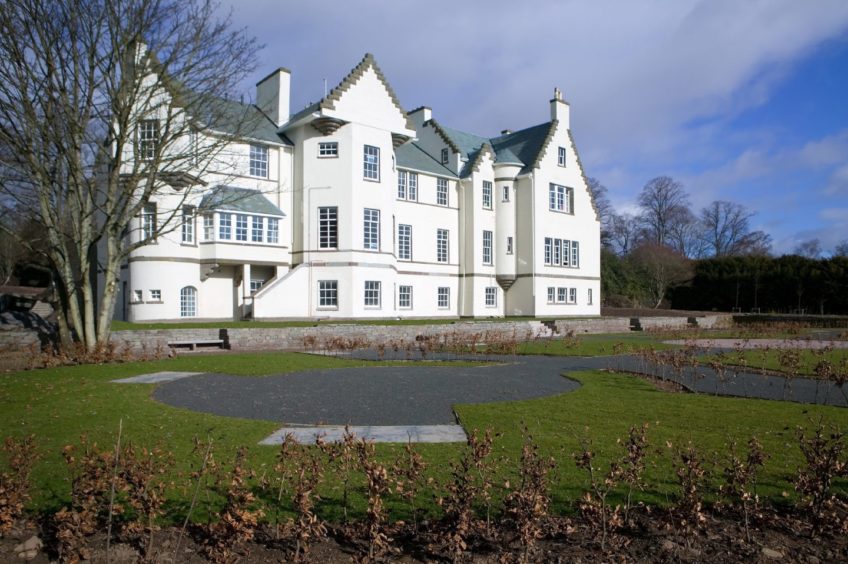Ballumbie House went up in smoke 40 years ago following a devastating fire which threatened to destroy the historic building.
Over 40 firefighters fought for over an hour to bring the blaze under control at the building which was built in the 1800s.
Ballumbie House was built for David Miller in 1810 adjacent to Ballumbie Castle which dates back to 1545 but was already a ruin by 1682.
Becoming a hotel in 1965
Ballumbie House on the Angus/Dundee border was sold to the McGavin family in 1847 who were flax and yarn merchants in the heyday of that trade.
The house was extended and embellished for the merchant Alexander Gilroy.
The mansion house was converted to a hotel in 1965 and was described as “the latest rendezvous for high-class dining in the Dundee area”.
Billy Connolly and Gerry Rafferty performed at the hotel during the 1960s which changed ownership over the years before closing down at the start of 1981.
The building became a target for a number of thefts and acts of vandalism before tragedy struck on June 12 1981 when it went on fire.
The building’s remoteness posed immediate problems for the seven appliances which arrived on the scene.
Eventually water was pumped from the nearest hydrant over a mile away and supplies had to be taken from the nearby burn to help fight a fire which had quickly taken hold.
A dense cloud of smoke covered the area and flames leapt high into the air as firefighters used a turntable ladder to help bring the blaze under control.
Five jets continuously pumped gallons of water onto the building from above but the fire threatened to reduce the building to a shell.
The fire was finally brought under control but 60% of the ground, second floor and attic space were completely gutted.
Remained in a sorry state
Firefighters remained on the scene into the night to damp down hotspots and make sure the flames didn’t whip up again.
Ballumbie House remained in a sorry state for decades.
The mansion house was eventually restored to its former glory as the centrepiece of a new housing development which started work in the early 2000s.
A selection of apartments and penthouses were created within the remains of the mansion through an extensive and sympathetic renovation.
Development work by Stewart Milne Homes located disarticulated human remains to the north west when they began preparing the site for construction in 2005.
The building developers notified the police and Angus Council and brought in archaeological experts from SUAT Ltd to remove the remains for them to be buried elsewhere.
It was decided complete excavation was necessary because preservation was not an option.
Eight weeks of excavation revealed the remains of the forgotten medieval church, associated Laird’s Aisle and graveyard.
The medieval activity overlay a completely unknown Early Christian long-cist cemetery that was defined by a ditch.
The remains were found in May 2005.
Important archaeological find
The aisle contained the remains of at least four human burials, one of which lay in a mural tomb in the southern wall.
The church contained many layers of internal burial, concentrated at its western end, and included the burial of a priest.
This site has proved to be one of the most important rural medieval church sites excavated in Scotland.
Nine coins were recovered, probably medieval, one, possibly two, of silver.
Organic remains were found on several items, including the possible remains of a sheath on a possible blade.
The vast majority of the iron finds were nails, several with wood adhering.
All of the iron objects were mineralised.
Copper alloy finds, all extensively corroded with varying degrees of preservation of the surface area, were represented by coins, various fragments, spoons, tags and buckles and two tubular bracelets, one with much detail remaining.
This also had a small fragment of textile adhering and traces of contact with leather.
